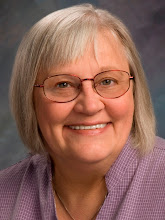Independents find this abuse of political power to be especially heinous. However, most Americans consider redistricting—drawing the lines of congressional districts—to be synonymous with "drowsy somnolence." Really, if you want to quickly kill a conversation with anyone other than a political junkie, just mention congressional redistricting.
Members of the U.S. Congress would have it no other way. They want us to be bored to death and as disengaged as possible when it comes to determining who will represent us. It's no secret that the two major parties often collude in drawing the district lines: You give us this area with all these Republican voters, and we'll let you have that area with all those Democratic voters.
All this results in some pretty bizarre—and non-competitive—districts. Enter Manifold System's Dimitri Rotow, who created several Google Earth files showing some of the worst districts in the country. His work is an eye-opener, and pretty cool to boot.
You can also play The Redistricting Game, which was developed by some brains at USC to help the Mensa-challenged understand how legislative districts are created. “This system is subject to a wide range of abuses and manipulations that encourage incumbents to draw districts which protect their seats rather than risk an open contest," the website tells us. The game "allows players to experience the realities of one of the most important (yet least understood) aspects of our political system.” And—the thrills are never-ending—there's a game based on the Fairness and Independence in Redistricting Act of 2007 (a.k.a. the Tanner Redistricting Bill), which calls for independent, rather than bipartisan, redistricting commissions and other reforms.
Then there's Gerryminder, an online simulation developed to teach college students about congressional elections, representation, and gerrymandering. "By putting students in a position to manipulate district lines in multiple contexts, Gerryminder provides a non-boring, experiential way to teach redistricting," we're told. Let me know what you think; I haven't given it a test drive yet.
There are lots of proposed solutions to this problem, but the powers that be are—surprise!—resistant to those efforts. One such proposal is particularly popular among independents—the creation of “superdistricts,” in which several legislators would represent a single district. They believe that such a reform would increase voter participation, offer fairer representation, and give independents and third-party candidates a chance to not only run but maybe even win.
Next time we move on to reforms that directly affect voters. And non-voters. Or both.




No comments:
Post a Comment